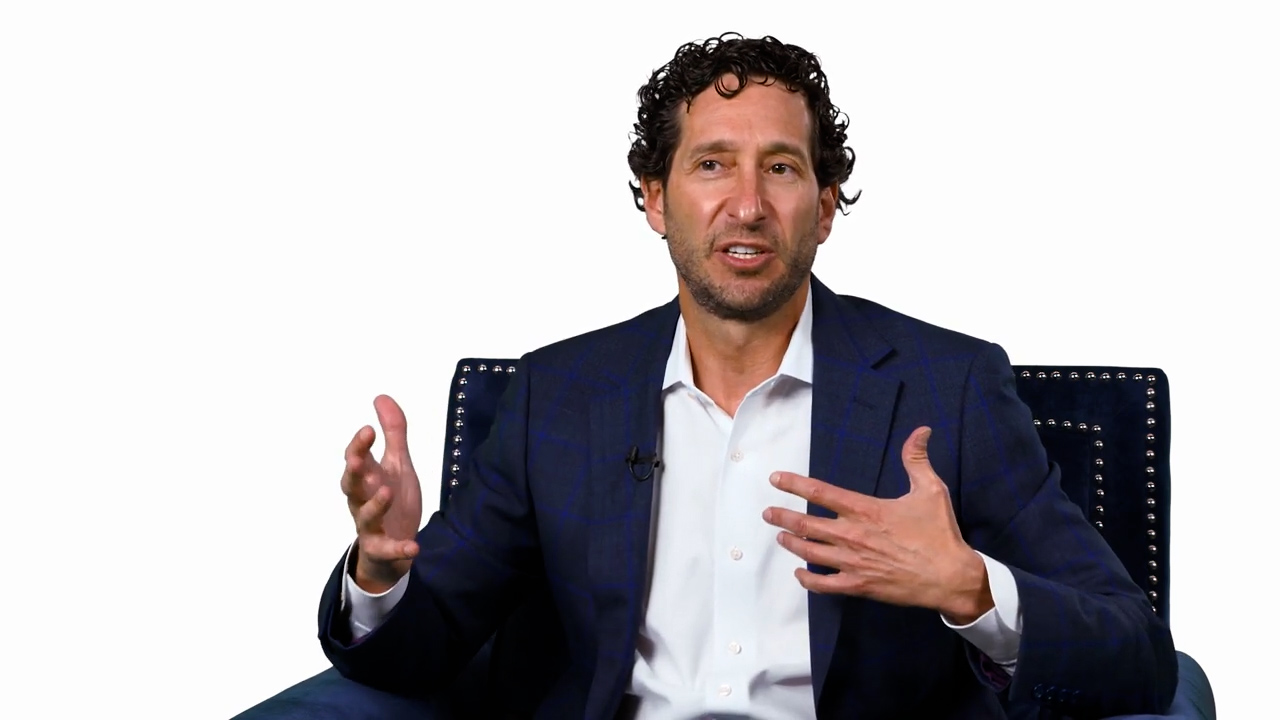It is no secret that Nevada is often found at the top of all the ‘bad’ lists and at the bottom of all the ‘good’ lists. The economy, housing market crisis, declining tax revenues and a host of other issues are contributing to growing concerns about the quality of life throughout the U.S. and here in Nevada. Education has become especially concerning in the state of Nevada. K-12 education deserves important consideration as it is a fundamental platform for growing future generations. High dropout rates, transiency, below average student performance, hiring freezes, declining levels of parental involvement and budget reductions of more than 14 percent over the next two years all contribute in shaping an education system where the future grows more uncertain and pessimistic.
For a better understanding of what is and a glimpse of what may be, professionals share their insights and experience on current challenges and hopes for the future.
Nevada’s Astonishing Dropout Rates
A high dropout rate is detrimental for the community. According to a report by Editorial Projects in Education, a non-profit with a mission of helping raise the level of awareness and understanding among professionals and the public about important issues in American education, approximately 45 percent of Nevada’s high school students earned their diplomas in 2005 — the lowest rate in the nation. The national average is 71 percent.
“The dropout rate, on which we perform the worse, measures the number of freshmen who graduate. This fails to account for the freshmen who move away from Nevada before graduating, which is a large number for Nevada compared to other states due to high transiency in the state. This rate also fails to capture freshmen who are removed from the public school system and placed in alternative schooling, another big number in Nevada due to the rise of home schooling,” said State Senator Bob Beers. “In addition, we have a local economy, driven by construction and tourism, which offers jobs to young people possessing a strong work ethic without penalizing them for failing to achieve an endurance award from the Clark County School District (CCSD), which results in young adults choosing a job over finishing school. Most places in America don’t offer that choice.”
Thousands of families move to Clark County each year, and thousands more move away, leaving the job of tracking students and following up on their movements to our schools.
“A significant portion of the dropouts are students whose families move and do not notify the schools. The failure of receiving districts to request transcripts compounds the problem,” said Dr. Lauren Kohut-Rost, deputy superintendent of instruction, CCSD. “Where we have seen significant reduction in dropouts are in schools whose registrars are rather veteran and have put tracking mechanisms in place in order to ensure that students who withdraw are enrolled elsewhere.”
Transiency and the lure of well-paying job opportunities available to those without an education make it challenging for schools to keep students enrolled and to engage those students who may be on the fringe.
“Transiency is our biggest challenge. For the past two years, the district has hired retired counselors in an attempt to contact students designated as dropouts for the previous school year in order to determine why they left school and assist them in re-enrolling if they so choose,” said Dr. Karlene McCormick-Lee, associate superintendent, CCSD.
McCormick-Lee notes that of the 3,791 students counselors attempted to contact in the fall of 2007, 2,771 had disconnected phones and/or no valid emergency contact number. Of the 1,020 students, or their immediate families, who were located, 11.8 percent said they dropped out of school to work. A high percentage, 47 percent, of those dropping out does so during the summer months.
But CCSD is taking action. In fact, more than 35 programs have been implemented to offer students with diverse needs the resources they need to stay in school. One such program is 8th Grade Back on Track, which helps students who have turned 16 and are unable to pass eighth grade by placing them in an intensive program of academic, behavioral, social and career-related instruction. Homeless advocates, adult mentoring, block scheduling, proficiency tutoring, attendance incentives and language transition services are just a handful of the many programs offered.
The Washoe County School District, which serves 63,000 students, does not have the high percentage of dropouts that other districts face, 2.6 percent in 2005-06, but administrators are still working hard to reduce that number.
“Our research shows pretty clearly that the primary reason students drop out is that they get behind in credits needed for graduation, get discouraged and just give up,” said Paul Dugan, Superintendent of Washoe County School District (WCSD). “It starts at the freshman level, which is why all of our high schools have a ‘Focus on Freshman’ program. We also have a summer program for incoming freshmen called Jump Start, which is showing some success. We have a new strategic plan focusing on lowering the dropout rate and improving the graduation rate. Our teachers and principals pay close attention to individual student performance data and differentiate their instruction to meet the student’s personal needs.”
Terry Hickman, executive director of the Nevada State Education Association (NSEA), which represents more than 29,000 teachers and education support professionals, believes one solution for reducing the dropout rate is for middle schools to be smaller so students can be grouped in a way that gives them a real identity during the pre- and early teen years.
“The transition to high school should begin with a ninth grade that is built to help the students succeed in small groups and identify with their peers. The high school choices in Clark County range from magnet schools, to career and technical trade schools, to traditional high schools,” said Hickman. “The importance of this choice cannot be underestimated, and it must be a family choice.”
Parental Involvement
Even when schools and teachers are doing their part, students, especially those who might be struggling or thinking about dropping out, can strongly benefit from actively involved parents and family. High volumes of shift workers, single-parent homes and hectic schedules in Nevada can pose a real challenge to being involved.
“A student who is not doing well requires assistance from the school and the home with clear expectations for everyone involved in the student’s education,” said Hickman. “The business community could step up and allow parents to attend conferences and school functions during the day. Schools are now offering updates through email on student achievement and attendance, and it is critical that the parents and teachers stay in contact throughout the entire school year.”
WCSD has a comprehensive parental involvement program, which includes a full-time staff member dedicated to building and growing the program.
“The two most important factors in student achievement are a highly qualified teacher at the front of the classroom and involved parents,” said Dugan. “We have a Parental Involvement Council, which advises us on policy matters and helps design and implement best practices. They recently surveyed parents about what we could improve upon and recommendations will start to be implemented this school year.”
Open Enrollment vs. Zoning
Many states are taking a look at open enrollment as a way to improve student attendance and performance and give parents more of a voice in their child’s education. Arizona’s successful intra-district and inter-district programs enable parents to enroll their children in any school within the school district where they live or in any other school located in another district in the state. But parents must foot the bill for transportation.
Nevada also has an intra-district policy, and in Clark County about one in every ten students attends a school other than the one for which they are zoned.
“This includes students participating in our zone variance process, as well as the thousands who have enrolled in our many magnet schools, career and technical schools, alternative programs and the School Choice pilot program introduced last school year in the Northeast Region,” said Dr. Craig Kadlub, chief of staff, CCSD. “Incidentally, the CCSD introduced legislation that would have funded transportation for the pilot program, on the premise that the choice doesn’t really exist if families can’t afford to change schools. But the bill did not pass.”
As a result, Kadlub says only families who are able to figure out their own transportation can participate in the Choice pilot. And he notes that space availability is another factor.
“Many areas where choice is promoted have flat or declining enrollment, which leaves many seats open,” he said. “Most CCSD schools are operating at or near capacity.”
Charter Schools
Charter schools appear to be a workable remedy to help ease the burden of overcrowding. They are public schools that were created to provide more accountability for student performance and more choices for parents. But while neighboring states like Arizona and California continue to successfully add charter schools to the mix, Nevada will not be following suit in the near future, the Nevada State Board of Education has placed a moratorium on new charter schools.
Kadlub thinks charter schools are a valuable component of the overall public education picture. Their original intent was not only to inspire competition, but also to offer students and families a unique alternative in pursuing education.
“Those are noble intents, and, to some extent, the effort is succeeding,” said Kadlub. “The problem is that, while the law prescribes extensive oversight responsibilities to districts and the State Board of Education, no additional funding has been provided to accomplish those tasks.”
He said the Clark County School District board and administration support charter schools, but object at having to dedicate resources that are for CCSD students to non-CCSD students to meet oversight mandates. “Charter schools can and should be permitted to flourish, but not at the expense of those who prefer the traditional system. Legislators who support charter schools should also support funding for adequate oversight,” said Kadlub.
Budget Restrictions
With the current budget crisis and tax revenue projections lower than anticipated, it seems unlikely that additional funding will be allocated to charter school oversight. In fact, it appears that all state agencies must prepare to cut their budgets by 14 percent and possibly more.
“For the CCSD, this would amount to a budget reduction of more than $130 million in each year of the 2009-2011 biennium. While we hope that the state’s financial prospects will improve and other potential revenue sources are enacted, we are in a position of having to plan for the worst,” said Jeff Weiler, chief financial officer, Clark County School District.
Weiler notes that 85 percent of the District’s operating budget goes toward employee salaries and benefits, with the majority of these expenditures directly in the schools. He says it will be impossible to sustain cuts of this magnitude without cutting core academic programs.
“It will be difficult with more students next year for the same amount of funding we received this year. In fact, it is possible we will receive as much as $500 less per student next year from the state than we will have received this year,” adds Weiler. “At that level, we would spend less per student next year than we did two years ago.”
Teacher Shortage Continues
No matter how the budget stacks up, one thing is certain: teachers are still the backbone of education. While teacher shortages are not as bad as they once were, 1,000 instructors are still needed to meet the needs of the Clark County School District this year. A hiring freeze, designed to prevent layoffs down the road, means teachers will only be hired if they are urgently needed. In all, the district employs approximately 18,000 teachers. In Washoe County, there is not a dramatic teacher shortage, but Dugan reports there are spot shortages in critical areas such as special education and English as a second language.
School District Sizing
Some may wonder if student performance might improve if the nation’s fifth-largest school district were not so massive. The Clark County School District was not always so colossal, but adding thousands of students to the district has led to its current size. For years there has been talk of decentralization or completely dividing the district for reasons ranging from economic to academic.
In the Nevada Policy Research Institute’s paper entitled “Does School District Size Matter?” authors Robert Schmidt and Alan Schlottmann wrote that school district size does matter, and that students, teachers, parents and taxpayers all do better in smaller school districts with smaller schools.
“Most studies that consider district size qualify their findings by adding comments about school size and class size,” said Kadlub. “In other words, reducing district size in conjunction with other reforms can result in improved achievement. But the claim that deconsolidation alone will improve achievement cannot be substantiated.”
Kadlub says drawing lines on a map does not address the real problems of overcrowded schools, large class sizes and inadequate basic support services, nor does it deal with concentrations of poverty and second language students in certain areas of the district. These concerns, he said, would still exist on the same scale even if the district were fragmented.
“The most effective education reforms are those that are implemented at the school and classroom levels, and which focus on things like school size, class size and teacher quality,” said Kadlub. “Deconsolidation could be supported if it is the outcome of a meaningful education plan, but meaningful education shouldn’t be an afterthought in a deconsolidation plan.”
Regarding district size, Beers notes that more than 70 percent of Nevada’s students are in one school district, 20 percent are in another district and the remaining 10 percent are in the state’s 15 other school districts.
“The biggest problem facing Nevada is our concentration of 70 percent control in one giant, impersonal government entity, and the likelihood that the junior giant, impersonal government entity that controls 20 percent will become more like the first one,” said Beers. “Virtually nowhere else in America has there evolved such a concentration of educational bureaucracy. We are now a top 50 Metro Statistical Area (MSA) and no other top 50 MSA city has just one school district. None.”
Beers thinks solutions might eventually involve decreasing the power of the Clark County School District’s central administration. He says this may take the form of breaking the District up into many smaller districts, or shifting power away and granting it to local schools, the design behind charter and empowerment schools, for example. But he says it is not very likely the legislature will enact these reforms.
“The groups who would lose power under such reforms maintain a platoon of high-paid and effective legislative lobbyists who are of one voice when the discussion turns to shifting power away from their organizations,” said Beers.
If the district were to be divided in some way, Hickman wonders if doing so would give students more opportunity for achievement or if it would become a state encompassed with ‘have’ and ‘have not’ school districts.
“I think most parents want their student’s school to be a learning center with up-to-date materials and dedicated teachers, support professionals and administrators,” said Hickman. “The talk of decentralization overrides the real topic that needs to be discussed, and that is the needs of our students.”










